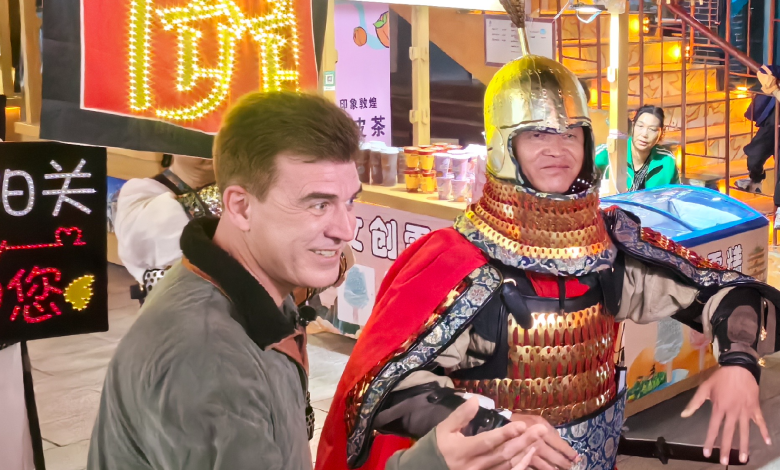How China's past shapes its future as the nation celebrates 75th ann.


The modernization of China, its conversion from a predominantly agricultural economy with a largely rural based working population to the world’s second-largest economy has been, very possibly, the greatest economic success story of the last century.
In 1949, Chairman Mao Zedong proclaimed the founding of the People’s Republic of China on the Tiananmen Rostrum. China celebrated its 75th birthday on October 1.
From the birth of the nation to today represents the greatest lifting of any population on the planet from poverty, or near-poverty, to true modernity, in the shortest space of time, in history.
I had never been to China before entering the country on April 30, 2024. I hadn’t left Beijing until September 12, 2024.
In the last few weeks, I have traveled the country for CGTN as part of its coverage to mark this historic occasion.
I have been to the throat of the ancient Silk Road, gateway and access point to historic China, by visiting Dunhuang. There, I delighted in its culture and elegance, ate in its famous night market and reported to the world on the city’s significance and success.
Outside the town’s walls, I climbed the iconic Mingsha Shan and listened to the wind as it whistled across the tips of the dunes and lifted the fabled grains of the “Singing Sand Mountain” high into the air. They danced and sang and flew away in the breeze.
While I listened to their melody, I watched thousands of tourists from across the world, their feet clad in brilliant neon-orange nylon boots to protect their feet from the desert’s relentless desire to gain access to any crevice it could. The visitors wandered below me around the shores of the breath-taking Crescent Moon Lake.
Many were there to take part in the nightly festivals hosted by the national park. Each evening, a huge laser light show was put on, with thousands of drones flying through the sky in formation, making patterns – roses, goddesses, swirling galaxies and messages of community spirit were all displayed in the sky, as nearly 30,000 people below joined together in singing pop songs.
No one needed to know the words. They were projected on the side of one of the other dunes so that everybody could join in.
Everyone sang. Everyone joined in the spirit of the Mid-Autumn Festival, as the full harvest moon rose behind the mountain and shone down on the oasis below.
This was modern China in a single scene.
In 75 years, the journey from a predominantly agricultural economy to a world leader in drone technology and nightime entertainment, on display, clear for all to see.
While the people sang, I purchased a wishing tablet from the tourist shop and wrote a wish for my ten-year-old son and myself – For Edward & Philip: Love, Health, Wealth and Wisdom.
I then tied the tablet next to 50,000 others on the Moon Bridge traversing the recreated monastery that nestles against the lake. A wish tied next to so many others, under the watchful gaze of the statue to the moon goddess Chang’e.
Modern China celebrates its technological prowess, while remaining proud of its cultural heritage and history.
Traveling Mingsha Shan and Crescent Moon Lake took me barely three days of my nearly three week trip around the land.
It was a story I saw repeated across the nation. Without even leaving the environs of Dunhuang, my team of nearly 30 and I also visited another UNESCO World Heritage Site, the Magao Caves.
Here, walls painted and crafted over a period of 1,600 years are being preserved for future generations with the best technology available. The caves bring millions of yuan into Dunhuang’s economy and are a site of enormous archaeological interest.
But they also tell the same tale: conserving the past for the future, while allowing those in the present to appreciate their splendor.
From the mountain city of Kaili, where members of its Miao ethnic minority put on fashion shows of their internationally famous silks, to the sturgeon farms of Ya’an, which sell caviar to the restaurant in Dubai’s iconic seven-star hotel, the Burj Al Arab – modern China draws strength from its history and rich tapestry as it also looks outward to the rest of the world.
China has much to be proud of and draw from as it celebrates the 75th anniversary of its modern incarnation. A nation reborn and marching forward as a leader, among friends, of the global south, toward a stronger and better future for all.

